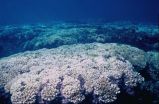(Press-News.org) Researchers at Penn State University have developed a chemical model that mimics a possible step in the formation of cellular life on Earth four-billion years ago. Using large "macromolecules" called polymers, the scientists created primitive cell-like structures that they infused with RNA -- the genetic coding material that is thought to precede the appearance of DNA on Earth -- and demonstrated how the molecules would react chemically under conditions that might have been present on the early Earth. The journal Nature Chemistry will post the research as an Advance Online Publication on 14 October 2012.
In modern biology, all life, with the exception of some viruses, uses DNA as its genetic storage mechanism. According to the "RNA-world" hypothesis, RNA appeared on Earth first, serving as both the genetic-storage material and the functional molecules for catalyzing chemical reactions, then DNA and proteins evolved much later. Unlike DNA, RNA can adopt many different molecular conformations and so it is functionally interactive on the molecular level. In the soon-to-be-published research paper, two professors of chemistry, Christine Keating and Philip Bevilacqua, and two graduate students, Christopher Strulson and Rosalynn Molden, probe one of the nagging mysteries of the RNA-world hypothesis.
"A missing piece of the RNA-world puzzle is compartmentalization," Bevilacqua said. "It's not enough to have the necessary molecules that make up RNA floating around; they need to be compartmentalized and they need to stay together without diffusing away. This packaging needs to happen in a small-enough space -- something analogous to a modern cell -- because a simple fact of chemistry is that molecules need to find each other for a chemical reaction to occur."
To test how early cell-like structures could have formed and acted to compartmentalize RNA molecules even in the absence of lipid-like molecules that make up modern cellular membranes, Strulson and Molden generated simple, non-living model "cells" in the laboratory. "Our team prepared compartments using solutions of two polymers called polyethylene glycol (PEG) and dextran," Keating explained. "These solutions form distinct polymer-rich aqueous compartments, into which molecules like RNA can become locally concentrated."
The team members found that, once the RNA was packed into the dextran-rich compartments, the molecules were able to associate physically, resulting in chemical reactions. "Interestingly, the more densely the RNA was packed, the more quickly the reactions occurred," Bevilacqua explained. "We noted an increase in the rate of chemical reactions of up to about 70-fold. Most importantly, we showed that for RNA to 'do something' -- to react chemically -- it has to be compartmentalized tightly into something like a cell. Our experiments with aqueous two-phase systems (ATPS) have shown that some compartmentalization mechanism may have provided catalysis in an early-Earth environment."
Keating added that, although the team members do not suggest that PEG and dextran were the specific polymers present on the early Earth, they provide a clue to a plausible route to compartmentalization -- phase separation. "Phase separation occurs when different types of polymers are present in solution at relatively high concentrations. Instead of mixing, the sample separates to form two distinct liquids, similar to how oil and water separate." Keating explained. "The aqueous-phase compartments we manufactured using dextran and PEG can drive biochemical reactions by increasing local reactant concentrations. So, it's possible that some other sorts of polymers might have been the molecules that drove compartmentalization on the early Earth." Strulson added that, "In addition to the RNA-world hypothesis, these results may be relevant to RNA localization and function in non-membrane compartments in modern biology."
The team members also found that the longer the string of RNA, the more densely it would be packed into the dextran compartment of the ATPS, while the shorter strings tended to be left out. "We hypothesize that this research result might indicate some kind of primitive sorting method," Bevilacqua said. "As RNA gets shorter, it tends to have less enzyme activity. So, in an early-Earth system similar to our dextran-PEG model system, the full-length, functional RNA would have been sorted and concentrated into one phase, while the shorter RNA that is not only less functional, but also threatens to inhibit important chemical reactions, would not have been included."
The scientists hope to continue their investigations by testing their model-cell method with other polymers. Keating added, "We are interested in looking at compartmentalization in polymer systems that are more closely related to those that may have been present on the early Earth, and also those that may be present in contemporary biological cells, where RNA compartmentalization remains important for a wide range of cellular processes."
INFORMATION:
EMBARGOED: Publication of information about the research described here is prohibited -- in any medium -- by the journal Nature Chemistry until its publication on the journal's Advance Online Publication website at 1:00 p.m., U.S. Eastern Time, on 14 October 2012.
This research was funded by the National Science Foundation (grant CHE-0750196).
[ Katrina Voss ]
CONTACTS
Philip Bevilacqua: 814-863-3812, pcb5@psu.edu
Christine Keating: 814-863-7832, cmd8@psu.edu
Barbara Kennedy (PIO): 814-863-4682, science@psu.edu
IMAGE
A high-resolution image associated with this research is online at http://science.psu.edu/news-and-events/2012-news/Bevilacqua10-2012, which is where the text of this press release will be published after the embargo lifts.
IMAGE CAPTION
Shown are RNA strands (blue) and RNA enzymes (red) coming together within droplets of dextran. Scientists at Penn State have shown that this compartmentalization helps to catalyze chemical reactions. Credit C. A. Strulson
Early-Earth cells modeled to show how first life forms might have packaged RNA
2012-10-15
ELSE PRESS RELEASES FROM THIS DATE:
Rare cells regulate immune responses; May offer novel treatment for autoimmune diseases
2012-10-15
DURHAM, NC -- Reproducing a rare type of B cell in the laboratory and infusing it back into the body may provide an effective treatment for severe autoimmune diseases such as multiple sclerosis or rheumatoid arthritis, according to researchers at Duke University Medical Center.
The findings, which were demonstrated in mice, highlight the unique properties of a subset of B cells that normally controls immune responses and limits autoimmunity, in which an organism mistakenly attacks its own healthy tissue. The work appears Oct. 14, 2012, in the journal Nature.
B cells ...
Research shows legume trees can fertilize and stabilize maize fields, generate higher yields
2012-10-15
Michelle Geis
mgeis@burnesscommunications.com
301-280-5712
Burness Communications
Wambui Kamiru
w.kamiru@cgiar.org
254-724-623-016
CGIAR
Research shows legume trees can fertilize and stabilize maize fields, generate higher yields
Africa's first long-term study finds legume trees planted alongside maize, combined with less fertilizer, is best solution for Africa's most important food crop
NAIROBI, KENYA (15 October 2012)—Inserting rows of "fertilizer trees" into maize fields, known as agroforestry, can help farmers across sub-Saharan Africa cope with ...
Report reveals key concerns of UK's aging society
2012-10-15
One in six people in England aged over 50 are socially isolated. They have few socially orientated hobbies, little civic or cultural engagement with society, and may have very limited social networks. This was a key finding from the most recent report of the English Longitudinal Study of Ageing (ELSA), a comprehensive study that aims to understand the economic, social, psychological and health concerns of an ageing society. The multidisciplinary ELSA research team showed that the least wealthy over-fifties suffer the most social isolation, with the wealthier over 50's half ...
Adding up autism risks
2012-10-15
The causes of autism and autism spectrum disorder (ASD) are complex, and contain elements of both nature (genes) and the environment. New research published in BioMed Central's open access journal Molecular Autism shows that common genetic polymorphisms (genetic variation) can add up to an increased risk of ASD.
The contribution of inheritance and genetic mutation versus environmental factors to the risk of ASD is hotly debated. Most twin studies show the contribution heavily tilted toward inheritance, but the exact amount of involvement of genes in ASD risk is less apparent. ...
Making a layer cake with atomic precision
2012-10-15
In a report published in Nature Physics, a group led Dr Leonid Ponomarenko and Nobel prize-winner Professor Andre Geim has assembled individual atomic layers on top of each other in a desired sequence.
The team used individual one-atom-thick crystals to construct a multilayer cake that works as a nanoscale electric transformer.
Graphene, isolated for the first time at The University of Manchester in 2004, has the potential to revolutionise diverse applications from smartphones and ultrafast broadband to drug delivery and computer chips.
It has the potential to replace ...
Breakthrough could help sufferers of fatal lung disease
2012-10-15
Pioneering research conducted by the University of Sheffield is paving the way for new treatments which could benefit patients suffering from the fatal lung disease pulmonary arterial hypertension (PAH).
For the first time scientists have found an antibody treatment that not only stops PAH getting worse, but also reverses the condition in mice and rats. The research was funded by the British Heart Foundation and the Medical Research Council (MRC) and is published in the Journal of Experimental Medicine.
PAH – high pressure in the blood vessels supplying the lungs – ...
Applied physics as art
2012-10-15
Cambridge, Mass. – October 14, 2012 – In Harvard's Pierce Hall, the surface of a small germanium-coated gold sheet shines vividly in crimson. A centimeter to the right, where the same metallic coating is literally only about 20 atoms thicker, the surface is a dark blue, almost black. The colors form the logo of the Harvard School of Engineering and Applied Sciences (SEAS), where researchers have demonstrated a new way to customize the color of metal surfaces by exploiting a completely overlooked optical phenomenon.
For centuries it was thought that thin-film interference ...
Too much of a good thing can be bad for corals
2012-10-15
MIAMI -- A new study by scientists at the University of Miami (UM) Rosenstiel School of Marine & Atmospheric Science shows that corals may be more severely impacted by climate warming when they contain too many symbiotic algae. The single-celled algae living inside corals are usually the key to coral success, providing the energy needed to build massive reef frameworks. However, when temperatures become too warm, these algae are expelled from corals during episodes of coral 'bleaching' that can lead to widespread death of corals. Until now, it was thought that corals with ...
Solar wind particles likely source of water locked inside lunar soils
2012-10-15
ANN ARBOR—The most likely source of the water locked inside soils on the moon's surface is the constant stream of charged particles from the sun known as the solar wind, a University of Michigan researcher and his colleagues have concluded.
Over the last five years, spacecraft observations and new lab measurements of Apollo lunar samples have overturned the long-held belief that the moon is bone-dry.
In 2009, NASA's Lunar Crater Observation and Sensing satellite, known as LCROSS, slammed into a permanently shadowed lunar crater and ejected a plume of material that was ...
Researchers present new targets for treating depression at Neuroscience Annual Meeting
2012-10-15
Researchers from Mount Sinai School of Medicine are presenting important discoveries on the involvement of the immune system and dopamine cells in the onset of depression at Neuroscience 2012, the Society for Neuroscience's 42nd annual meeting on October 13 -17 in New Orleans, and are available for interviews.
In addition to scientists presenting at the conference, Dennis S. Charney, MD, Anne and Joel Ehrenkranz Dean, Mount Sinai School of Medicine, Executive Vice President for Academic Affairs, The Mount Sinai Medical Center, is available to speak about depression ...


